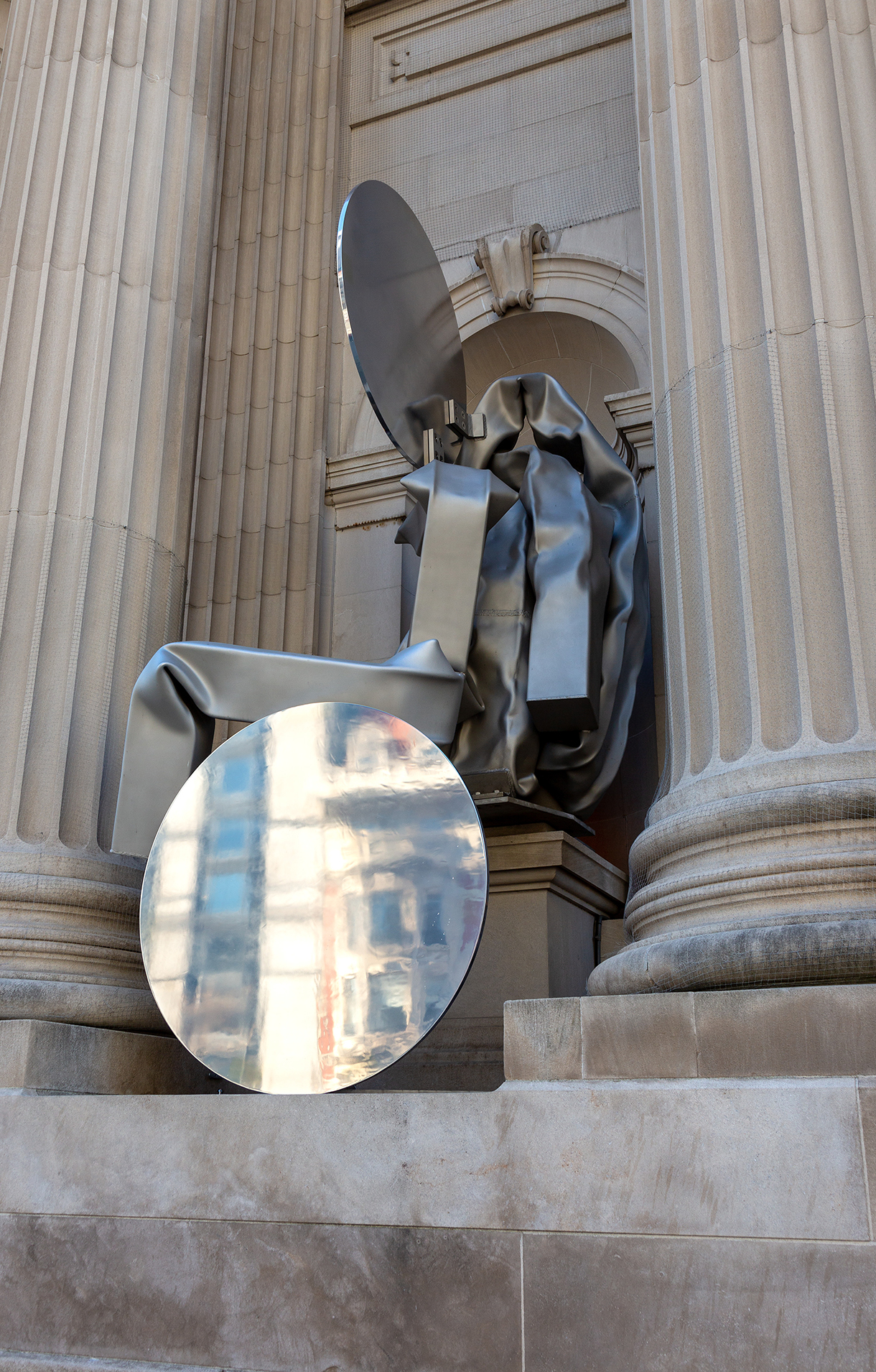When artist Carol Bove set out to create the works for her Façade Commission at the Metropolitan Museum of Art in New York—the second in a series of year-long commissions —she installed a to-scale model of one of the museum’s massive niches in her Brooklyn studio so that the process of configuring the sculptures would be as intuitive and hands-on as possible. It’s no wonder this step was integral to Bove’s process; interrogating scale and how it means within sculpture is one of her deepest considerations as an artist.
I first came to know Bove’s work after reading Roberta Smith’s The New York Times review of the seminal 2007 exhibition Unmonumental at the New Museum, which featured sculpture that countered, sabotaged, or dismantled the historically grand, monumental ideals of the art form. “Its ugly-duckling looks, rough edges, disparate parts and weird juxtapositions help stave off easy art-market absorption while also reflecting our fearful, fractured, materially excessive times back at us,” said Smith of the predominately assemblage-based works in the show. In quiet counter to Smith’s assessment, Bove’s contribution was a series of spare tableaus of elegantly arranged found objects and materials, almost all referencing nature in some way—driftwood, feathers, stone, and books atop original Knoll tables, slabs of wood, or low white plinths. Apart from being satisfyingly akin to a well-considered coffee table, the sculptures played tricks with perception: tiny stone blocks recalled outsized pieces of Egyptian pyramids or the remnants of Gothic cathedrals, while a set of modest, subtly scored marble bricks looked like micro modernist buildings marching down an avenue. Like refined tourist snow globes, in Bove’s hands, architecture’s greatest accomplishments were at once deftly memorialized and made trivial.
 Installation view of The séances aren’t helping I, 2021. Courtesy of the artist and David Zwirner. Image The Metropolitan Museum of Art, Photo Bruce Schwarz
Installation view of The séances aren’t helping I, 2021. Courtesy of the artist and David Zwirner. Image The Metropolitan Museum of Art, Photo Bruce Schwarz
How does one play on scale and perception when sculpturally taking on the actual façade of the Met, one of the most famously grand Beaux-Arts buildings in the world? To start, Bove looked to the motifs of Art Deco, culling from the movement’s hybridity of organic and industrial forms, including from the Met façade’s own ornamentation. Using reflective aluminum disks, which share the diameter of both the columns that flank the alcoves and the decorative roundels above, Bove fastened the disks to square steel tubes that had been bent and crushed into gestural forms that are nearly figurative—akin to massive writhing snakes, they also call to mind some construction site mishap, a failed attempt. The thin, flat aluminum disks, pristine and shiny, are secured to the crushed matte steel at various angles—beautifully incongruous in form but similar in color—so they can catch the sunlight throughout day as well as play back the scene of the surrounding cityscape, creating the illusion of movement on the façade and, in perhaps the cheekiest trick of scale, make the serious stone building glint and sparkle from the niches as if it’s donned some jewelry for a special occasion.
Bove has named the four monumental sculptures The séances aren’t helping, implying that in addition to their material work of thoughtfully occupying the empty places where things were meant be—the alcoves—the sculptures are involved in an active, though futile, spiritual endeavor of conjuring something from the past. In that light, the works can be seen as magical tools, and the steel tubes that embrace the disks suddenly gain a narrative meaning: perhaps it’s the weight of the energy that the reflective disks have been gathering from the sun, from the building’s history, and from the city itself, that has caused the steel to fold and bend.
Perhaps, when the bright disks of Bove’s work catch the sun and dazzle us while driving or walking past the old museum, we’re witnessing the sculptures being made and destroyed all at once.
Carol Bove: Collage Sculptures, curated by Dr. Catherine Craft, opens October 16, 2021 at the Nasher Sculpture Center
The first major museum presentation focused solely on Bove’s formidable sculptures assembled from scrap and painted steel, the Nasher’s exhibition will provide an in-depth consideration of one of the most consequential artists working today. Carol Bove: Collage Sculptures explores Bove’s work in relation to traditions of twentieth-century sculpture, using the context of the Nasher Collection to consider questions of scale; the ways that changing contexts can shift our understandings of individual artworks or constellations of objects; the artist’s investigations of spontaneity and discontinuity in relation to her materials; and the ways these sculptures present, in her words, “a story of movement and pressure, force and softness.”